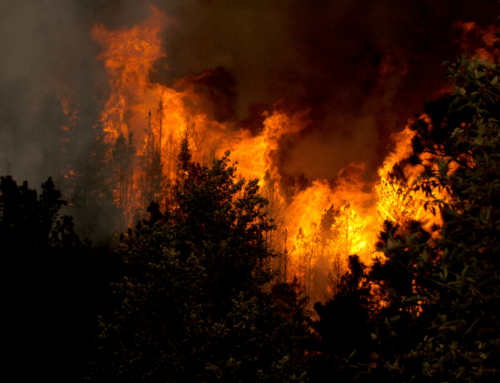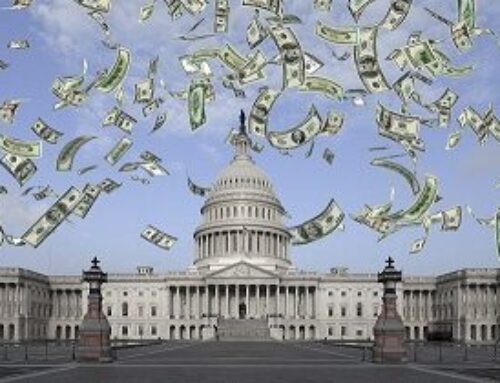As the threat of wildfires continues to rise across the country, so does federal spending to prevent and suppress wildfires, as well as efforts to build more resilience communities and mitigate future costs. Recent spending packages, including the Inflation Reduction Act (IRA, P.L. 117-169) and the Infrastructure Investment and Jobs Act (IIJA, P.L. 117-58), have included large increases in the amount of wildfire-related spending. Unsurprisingly, the President’s FY2024 Budget Request continues this trend, emphasizing new investments in the wildland firefighting workforce, wildfire prevention and mitigation activities, new research into wildfire risk and management, and other efforts to improve the country’s resilience to extreme weather and climate-driven risks.
Here are a couple of highlight from the President’s Budget Request:
Wildland Firefighting Workforce
- Investments $316 million over 2023 enacted levels to the U.S. Department of Agriculture (USDA) and $139 million over 2023 enacted levels to the Department of the Interior (DOI) to increase “the size of the workforce at USDA and DOI and supports additional mental and physical health services for that workforce.” These could indicate serious increases to the USDA’s and DOI’s Wildland Fire Management (WFM) budget. The proposed spending bumps alone represent 13% of USDA WFM and 10% of DOI WFM enacted levels in FY2023, respectively.
Wildfire Prevention Activities:
- $323 million to USDA “to support ongoing implementation of the 10-year Wildfire Crisis Strategy to increase the scale of fuel and restoration treatments within high risk “fire sheds” as part of the Administration’s comprehensive, nationwide response to the threat of catastrophic wildfire to natural resources, communities, and infrastructure.” This funding will be on top of additional funds appropriated in the IIJA for FY2024, including $102.8 million for hazardous fuels management and $45 million for burnt area recovery.
- $314 million to DOI “to help reduce the risk and severity of wildfires through fuels management and restore lands devastated by catastrophic fire.” This funding will specifically be directed to DOI’s Hazardous Fuels Management and Burned Area Rehabilitation programs. This will be in addition to $6 million for Hazardous Fuels Management and $45 million for Burned Area Rehabilitation appropriated through the IIJA for FY2024.
Wildfire Research:
- $2.5 billion to NASA for the Earth Science program which, among other things, will support “the development of applications and tools to support agriculture and wildland fire management.”
- $7 million to U.S. Geological Survey (USGS) for a “new integrated drought and fire science effort at the U.S. Geological Survey, which would help mitigate wildfire risk across the nation.”
- $231 million to the National Oceanic and Atmospheric Administration (NOAA) for climate research programs that underpin “critical science-based resilience and adaptation efforts across the Nation.”
Climate Adaptation and Resilience:
- $23 billion across DOI, USDA, Department of Homeland Security (DHS), and the Department of Defense (DOD) for climate resilience investments to “help build communities’ resilience to floods, wildfires, and storms, improve conservation and ecosystem management, strengthen America’s disaster response capabilities, increase the resiliency of rural housing to the impacts of climate change while reducing rent burdens, and ensure the resilience of the Nation’s defense to climate change.” Federal wildfire spending comes in many forms and is spread throughout numerous different federal agencies and departments. We expect to see more details on new and existing wildfire programs within these and other departments as budget materials continue to be released.
- $5.7 billion to DOI for activities to “mitigate the impacts of climate change—such as drought, wildfire, and severe storms—on America’s communities, lands, waters, and wildlife.”
- $1.2 billion to USDA to increase conservation adoption and farm income across privately owned land through the Natural Resources Conservation Service.
- $9 billion to DHS for climate resilience programs
Federal wildfire spending received a supersized increase over the last two years thanks to the IIJA and IRA. Making downpayment toward wildfire prevention and risk mitigation will decrease suppression costs down and road. However, the flood of funding must be closely scrutinized to ensure that wildfire programs under various agencies follow scientific evidence, are spending taxpayer dollars wisely, and are not working at cross-purpose with one another.











Get Social